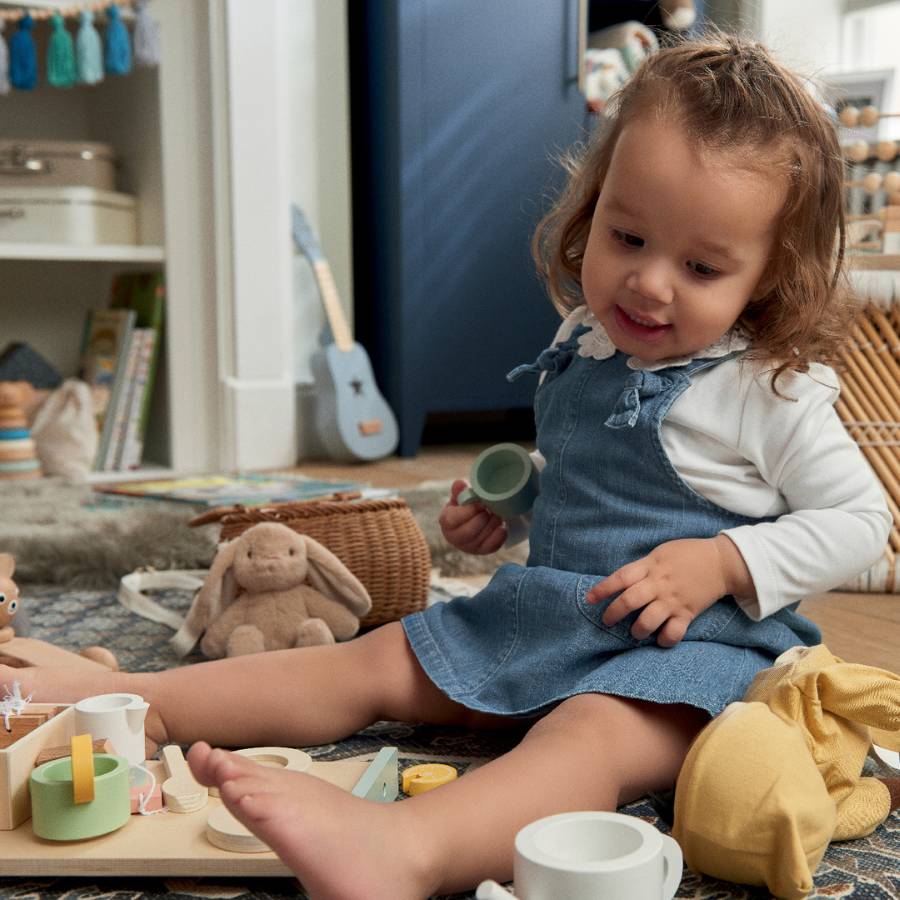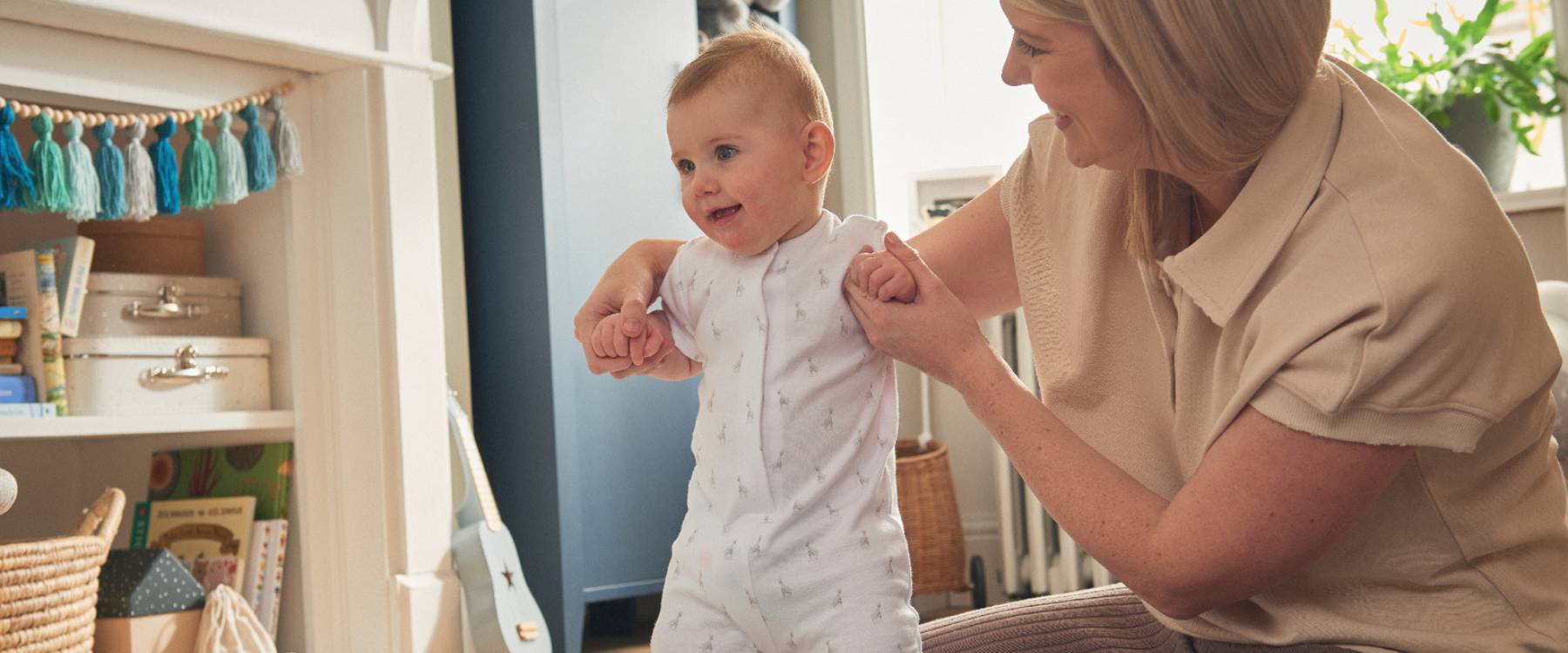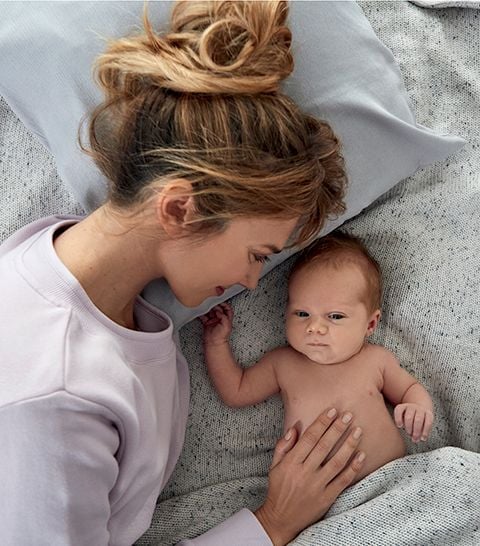
What are the Walking Stages?
Before your little one starts walking, there is usually a crawling stage. Before which, there is scooting or creeping. Babies develop multiple skills before they actually start walking all by themselves. From building core muscles to supporting their weight and controlling their limbs, these mini milestones lead them to taking those first steps.
For most little ones, their journey follows a predictable path, while others may move faster or slower through the steps, sometimes even skipping a stage or two. Below is the typical flow of events that leads to their first steps.
- Pushing up
- Rolling
- Sitting
- Scooting
- Pulling up
- Crawling
- Walking with support
- Standing on their own
- Walking

Every kid has an innate drive to become more mobile, so it is okay to sit back and let them learn in a safe space from time to time. However, you can motivate them to do better through simple ways that make use of their curiosity and promote proper muscle development.
Use your Furniture
After baby proofing your home, you can set up two pieces of furniture parallel to one another with enough space in between them to allow your little one to hold on to bold. For example, a coffee table and couch. Now you can sit on the opposite end of the aisle with their favorite toy to invite them to walk towards you. Once they are confident with this activity, increase the distance between the furniture so that they have to let go of one to hold the other. Meanwhile you can support them by holding their trunk.
Motivate with Toys
A well-known way to encourage your baby to move is with toys. If they can stand on their own, keep their favorite one just outside their reach. Once they reach it, you can either move it further away or entice them with another interesting object or toy at a distance. This activity will motivate your baby to take an independent step.
Encourage Squatting
When your toddler is standing against a wall or standing up holding furniture, hold a toy low to the ground so that they have to squat to pick it up. Repeat this activity multiple times to help strengthen the baby's core and leg muscles.
Positive Feedback
According to research, babies fall or trip 17 times per hour when learning how to walk. Whenever this happens, avoid any negative reaction. Instead opt for something purely descriptive such as “and down you go” or “you fell down”. Alternatively, when your kid shows signs of improvement such as pulling themselves up or walking with support, encourage them with praise, songs, cuddles and kisses. This will ensure that it is a fun experience for your baby throughout.

Choosing the Right Footwear
One of the best ways to learn how to walk is barefooted. The soles of a baby’s feet have thousands of nerve endings that make them sensitive to vibrations, textures, temperatures and other stimuli. Whether your toddler is walking on tiles, a carpet or wooden flooring, their feet absorb lots of information when they touch different surfaces. Encourage them to walk barefoot on sand or grass to help them explore their surroundings.
Before introducing footwear to your little one, start with socks. Make them wear a pair as you cuddle or hold them so they can get used to sensory input through their feet. Once they are comfortable with this, buy them shoes that are lightweight, flexible, and rounded. The idea is to avoid putting any weight on their feet while allowing for natural foot movement. Pairs with velcro or straps will allow a better fit as they lose fat over time. Additionally, check their shoes regularly to check they are still of the proper size for your kid as they will outgrow footwear quickly at this age.
Does Walking Affect Baby’s Sleep?
As with any major milestone in your little one’s life, walking will impact their sleep cycle. They might get excited and want to practice their new skills during nap time or at night. This might make it harder for them to drift off to sleep or result in more night wakings than usual. However, this phase is temporary and your baby will settle into their sleep schedule once the skill is mastered.
When to be Concerned?
In case your toddler doesn’t start walking by their first birthday, there is no need to panic. There is a wide range of period when your baby can reach this milestone, from 9-18 months of age. Most likely your child is just a slow walker taking their time to develop the skills. However, it might be a good idea to consult your pediatrician if they haven’t met key walking-related milestones prior, such as sitting unassisted by 9 months or standing by themselves by 12 months. This ensures that you are intervening early and solving any developmental issues at the root.
If your baby is facing any of the below as well, consult the doctor for further evaluation:
- If they are dragging one foot behind the other or turning one foot in
- Tripping and falling more than what is usually expected while learning how to walk
- Any limping or discomfort when they try to walk
- They are getting clumsier and slower than before
- Developing a skill and then losing it completely













